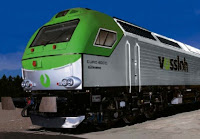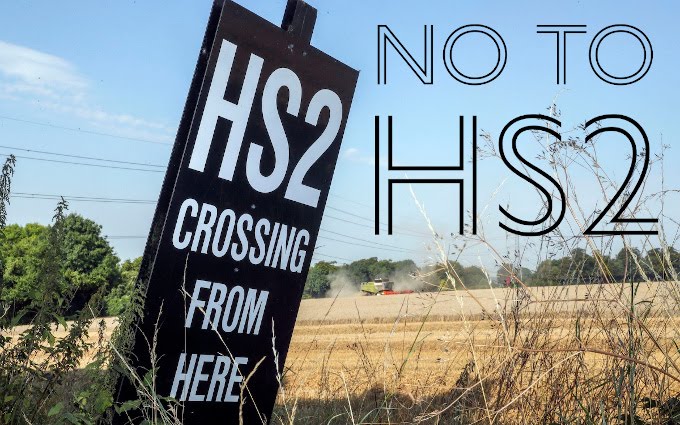


Impression of Bombardier Transportation Traxx P200 AC UK locomotive.
UK: Bombardier is targetting Greater Anglia and InterCity East Coast as possible customers for a UK version of its successful Traxx electric locomotive family. According to Alberto Lacchini, Director, Sales, in Bombardier’s Locomotives Business Unit, ‘we are well advanced in the design and are ready to launch the product’.

Bombardier believes that the Traxx P200 AC UK Bo-Bo electric locomotive fitted with a ‘last mile’ diesel engine would offer ‘a lot of value for money’ for UK operators such as Greater Anglia. Whereas the MkIII coaches used on London – Norwich inter-city services are ‘excellent’ vehicles that may last for another 20 years, the Class 90 locomotives will need to be replaced before that.
Lacchini emphasises that a 25 kV 50 Hz version of the Traxx family suitable for the UK with its small loading gauge will not require a special design to be developed. About 60% of components are common to all versions of the Traxx, one feature being the location of the main traction package in the centre of the locomotive rather than on either side of a central aisle. This makes it relatively easy to build a smaller and narrower version that would fit the UK loading gauge, Lacchini indicated.
Earlier this month, Bombardier announced two new versions of the Traxx - an electric locomotive with a low-powered diesel generator for use over short distances of non-electrified line, and a Multi-Engine locomotives, which will have four small diesel engines in place of one large prime mover. The four 540 kW engines will be of a proven and efficient industrial mass-produced type produced in very large series.
The use of multiple engines should to reduce fuel consumption and exhaust emissions as it will be possible to shut down engines altogether when idling and at times of low power demand.
The engines will be installed in exchangeable modules to cut the cost of maintenance, overhaul and upgrading, whilst the use of a mass-produced unit will mean that spare parts are readily available.
Another German manufacturer, Vossloh, is also making a pitch for the UK market with a version of the EURO 4000 passenger locomotive (below). Built in Valencia, Spain, this is clearly a derivative of the General Motors Class 67 which, after a faltering start, is performing well in the UK. The locomotive, which, at 4250 hp, is claimed by the manufacturer to be the Europe's most powerful diesel, is driven by an EMD two-stroke engine satisfying the latest emission standards.

In a rational world, these developments would point to the obvious idea of converting the HSTs into train sets for electric or diesel haulage in push-pull mode using locomotives such as these, available virtually off-the-peg. To cater for additional growth and to satisfy accessibility requirements, additional vehicles will eventually be needed. Now that suitable locomotives are at last available, it is the time to develop the design for a new generation of passenger coaches, incorporating all the knowledge and experience that has been gained since the mark 3 stock was on the drawing board forty years ago.
Article in Railway Gazette International

When I heard about the 'last mile' diesel offer by Bombardier for UK use I was scratching my head a bit - not that there is anything wrong with the proposed product - the issue was the suggestion that it would be used to replace class 90s. I don't see any reason to replace them - they're 20 years old and should last another 20 - ie as long as the Mk3s (I decided to put it down to corporate wishful thinking)
ReplyDeleteThat was then. What a difference a few days make.
- now such an order could provide part of a lifeline to Bombardier's Derby plant. (I assume Derby would be doing structural assembly and much of the rest from kits). It could be that placing such an order might become politically expedient for the current government if they can get a guarantee for UK assembly...
The great western electrification could give rise to at least a limited requirement for electric locomotives as well. I read recently that EWS (DB) were thinking about the need for electrics now they've got freight on HS1. Their key requirement was that it would be cheaper than the class 92. This is another potential order source. This could be quite interesting to follow in the news.
On the subject of Vossloh, I'm sure they would be willing to sell Euro4000s to the UK, but I think the machine they were proposing for use in the UK was the new "Eurolight" vehicle - which is a different machine in a few respects (CAT vs EMD engine, and 3phase ABB traction electrics vs DC GM-EMD motors). If there ever is a need for more locos of Class 67 type (but lighter in axleload, which was always the 67's Achilles heel) then they would be a good choice.
(I see there was a typo in Modern Railways talking about a EuroLight 4000 for the UK - no such thing (yet) .. the description sounds like the new EuroLight rather than the older Euro 4000 .. If it's a BoBo it would be a Euro 3000 anyway.. some confusion here)
By the news I heard was about DRS and a 3755hp CAT engined Vossloh machine eg http://forum.themessroom.co.uk/viewtopic.php?f=8&t=7571
The big ones have 2.8MW the little ones 2.3MW - definitely enough to propel an high speed EMU to Aberdeen or elsewhere and near to HST speeds in that hypothetical rational world you mention..
Bring the CNR Dalian locomotives to the UK,(see KiwiRail)and it would be great to see a UK Traxx loco,but I doubt it,our leasing companies and rail freight companies are still in love with the 66's.
ReplyDeleteI heard that the class 90s and 91s were due for a main overhaul, but this necessitated so much replacement parts it would be prohibitively expensive.
ReplyDelete